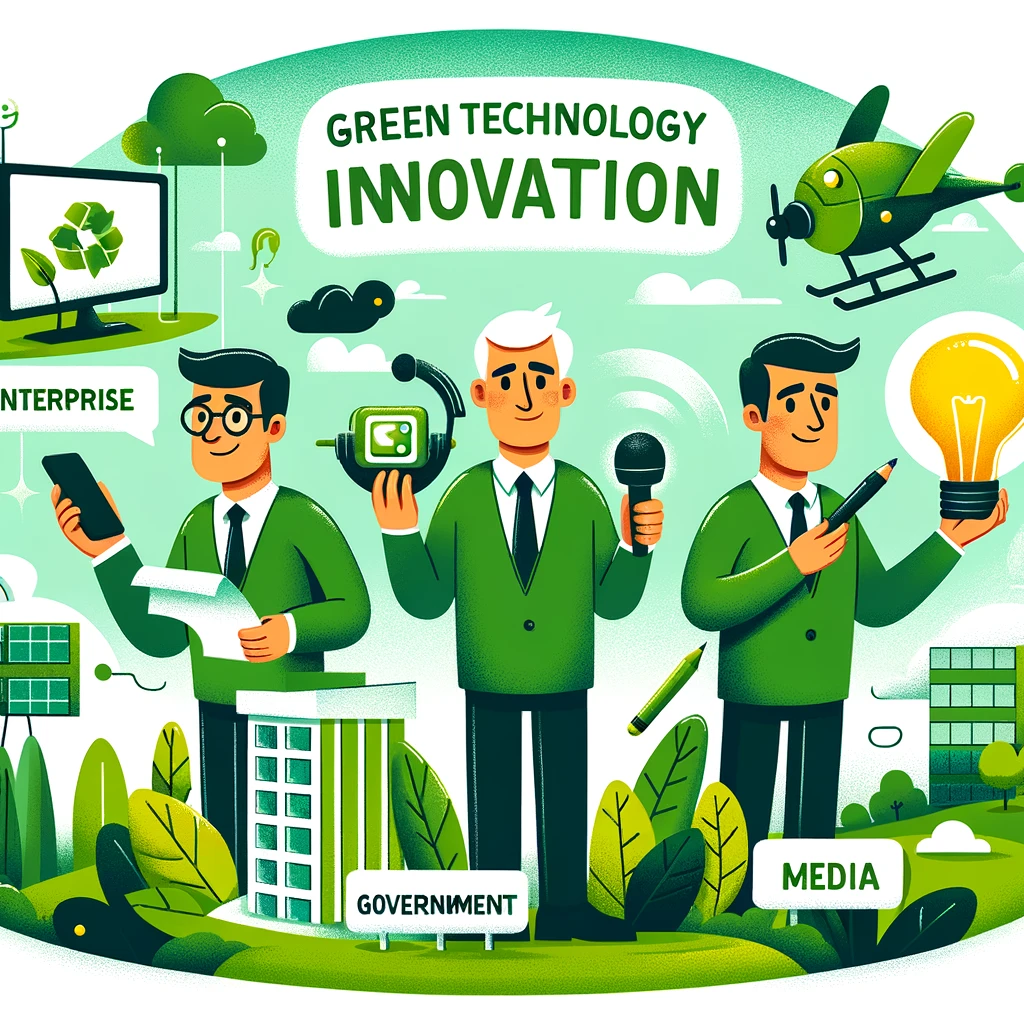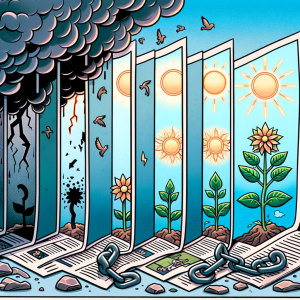
The Green Technology Innovation Game: A Deep Dive into the Interplay of Enterprises, Government, and Media
In the contemporary world, where environmental concerns are paramount, the innovation of green technology has become a critical goal for enterprises, guided and influenced by government policies and media coverage.
The article “A three-player game model for promoting enterprise green technology innovation from the perspective of media coverage,” published in Frontiers in Public Health, offers a groundbreaking exploration of this dynamic interplay.
The Core Concept: A Tripartite Game Model
The heart of this research lies in its unique approach: a three-subject evolutionary game model. A game model is a theoretical framework used to analyze and predict the strategic interactions and decision-making processes among different players, considering their individual goals, choices, and the consequences of these choices. It typically employs mathematical and logical tools to simulate various scenarios and outcomes, helping to understand the dynamics of competition, cooperation, and negotiation in various contexts.
This model is an advanced analytical framework that provides a dynamic and detailed examination of the interactions among three key players in the field of green technology innovation:
- Enterprises: These are the primary drivers of technological innovation. In the context of green technology, enterprises face the challenge of balancing profitability with environmental responsibility. Their role in the game model is to decide between continuing traditional production methods or shifting towards greener, more sustainable technologies.
- Government: The role of the government is to act as a regulator and policy-maker, providing incentives or imposing restrictions to guide enterprises towards environmentally friendly practices. The government’s decisions are pivotal in shaping the trajectory of green technology innovation.
- Public: Often an overlooked player, the public’s role is highlighted in this model. Their actions, driven by awareness and environmental concern, can exert pressure on both enterprises and the government. Public opinion and behavior, especially in the era of new media, can significantly influence the course of green technology development.
The New Media Environment: A Game Changer
The inclusion of the new media environment adds a contemporary and realistic dimension to the model. In today’s digital age, media plays a transformative role in shaping public opinion and disseminating information. This model recognizes the power of media as:
- A tool for awareness: Media coverage can increase public awareness about environmental issues and green technologies.
- An influencer of policy and strategy: Media narratives can influence government policies and enterprise strategies by highlighting environmental concerns and public sentiments.
- A watchdog: Media serves as a platform for public discourse and scrutiny, holding enterprises and governments accountable for their environmental impact.
Dynamic Interactions and Strategic Decisions
The evolutionary game model is dynamic, meaning it considers how strategies and interactions evolve. Enterprises, governments, and the public continuously adapt their strategies based on the outcomes of their interactions and the changing information landscape shaped by media. This dynamic approach allows for a more nuanced understanding of how green technology innovation can be effectively promoted.
- Feedback Loops and Adaptation: The model accounts for the feedback loops between the three players. For instance, if the public becomes more environmentally conscious due to media coverage, this can pressure enterprises to adopt greener technologies, which in turn may lead the government to revise its policies.
- Strategy Evolution: The model explores how the strategies of these players evolve. It considers factors like the initial probability of adopting a certain strategy, the economic and social benefits and costs, and the influence of media accuracy and reporting.
Key Findings: The Role of Media and Strategy Evolution
One of the most significant outcomes of the study is the discovery of four stable evolutionary strategies in the context of the tripartite game involving enterprises, the government, and the public. This finding is particularly noteworthy as it reveals the complex nature of strategic decision-making in the realm of green technology innovation. Each strategy represents a distinct combination of choices made by the three players: enterprises choosing between traditional production and green technology innovation, the government deciding on the extent of regulation, and the public’s level of participation in environmental supervision. The stability and viability of these strategies are not only determined by the initial choices and predispositions of each player. Still, they are also heavily influenced by the authenticity and influence of media reports. This aspect of the study underscores the media’s pivotal role in this intricate game.
By shaping public perception and information dissemination, media reports can significantly sway the strategic direction taken by enterprises and government, thus acting as a catalyst or a deterrent in the pursuit of green technology innovation. This interplay of strategies, influenced by media, creates a dynamic and ever-evolving landscape in the field of environmental sustainability, reflecting the complexity and interdependence of factors contributing to green technology advancement.
Implications for Public Health Practitioners
For public health practitioners, this study offers valuable insights. It underscores the importance of a balanced and just media environment in guiding public opinion and influencing government and enterprise strategies toward green innovation. Furthermore, it demonstrates the media’s potential in supplementing government regulations and fostering public participation in environmental governance.
Navigating the Three-Player Game: Strategies and Equilibrium
Enterprises, governments, and the public must navigate this complex game, where each player’s strategy affects and is affected by the others. The study’s numerical simulations provide a practical understanding of how various factors, including media report accuracy, impact the evolution of strategies toward green technology innovation.
Conclusion: Towards an Integrated Environmental Governance
The research concludes by emphasizing the need for a joint environmental governance system overseen by the government, enterprises, the public, and the media. This integrated approach is essential for achieving the dual goals of economic development and ecological preservation.
Moving Forward: Key Takeaways
- The Power of Media: The media’s role as a game-changer in influencing enterprise and government strategies towards green technology innovation.
- Interdependence of Strategies: The interconnected strategies of enterprises, government, and public, and how they evolve in response to each other.
- Towards Cooperative Governance: The importance of establishing a cooperative environmental governance system involving all key players.
By delving into this research, readers are invited to explore the intricate dynamics of green technology innovation and understand how each player in this game can contribute to a more sustainable future.
Unlock Your Public Health Potential – Subscribe Today!
Join the ranks of proactive change-makers with ‘This Week in Public Health.’ Elevate your understanding and engage directly with the latest in community health, innovative research, and advocacy. Every issue is more than just news – it’s a stepping stone to making a real difference. Subscribe for free now and be the change-maker in public health!



